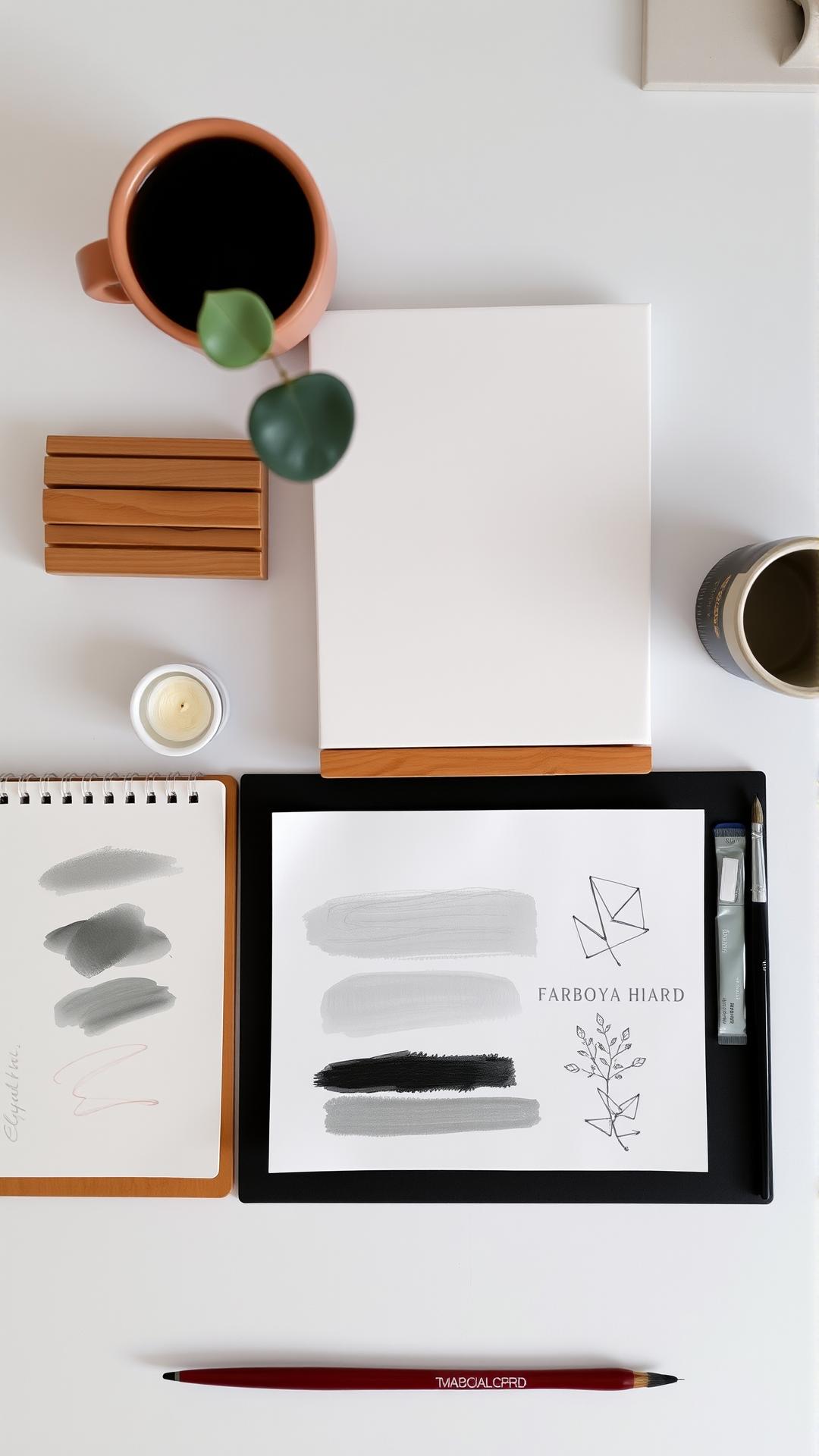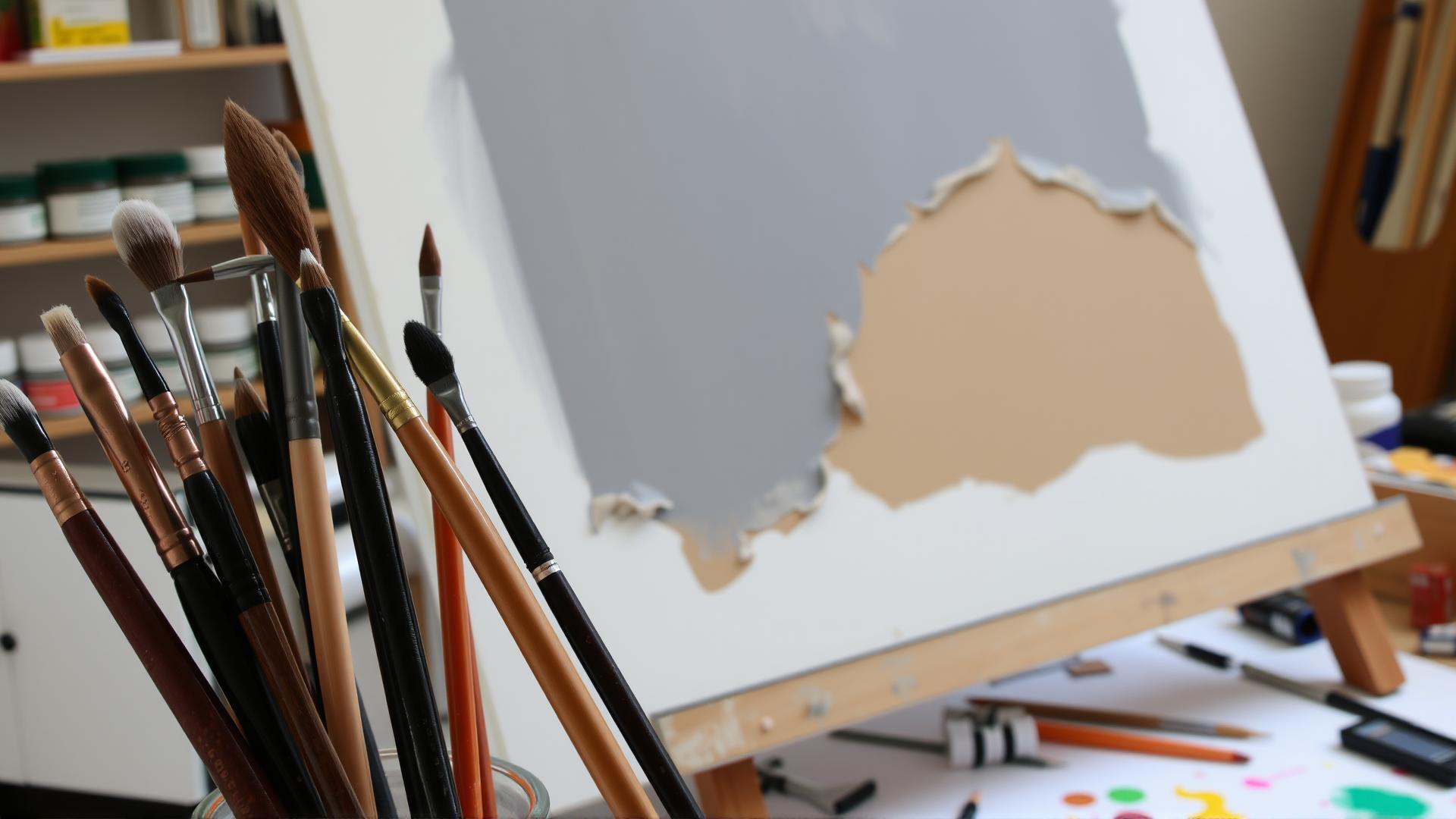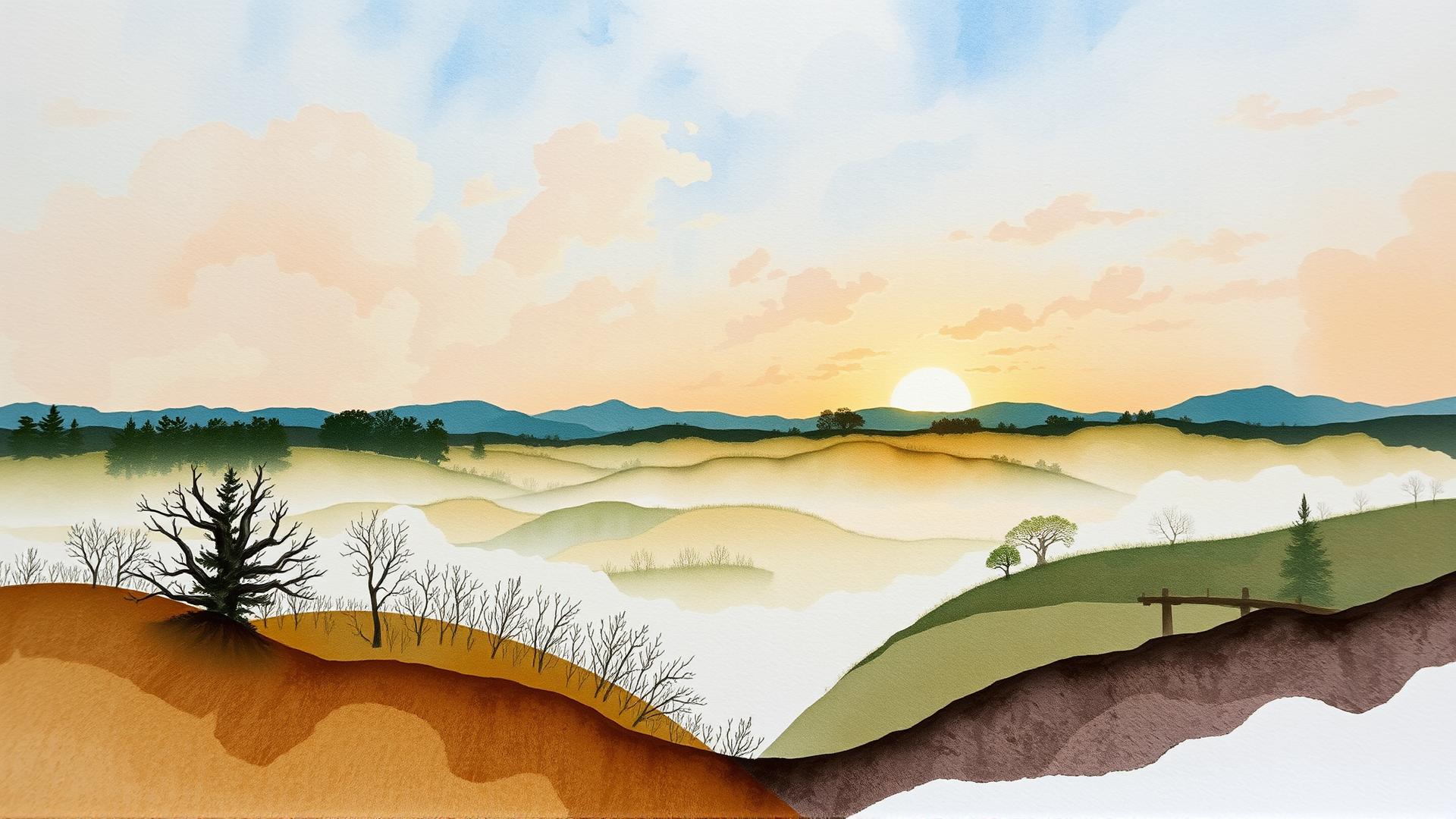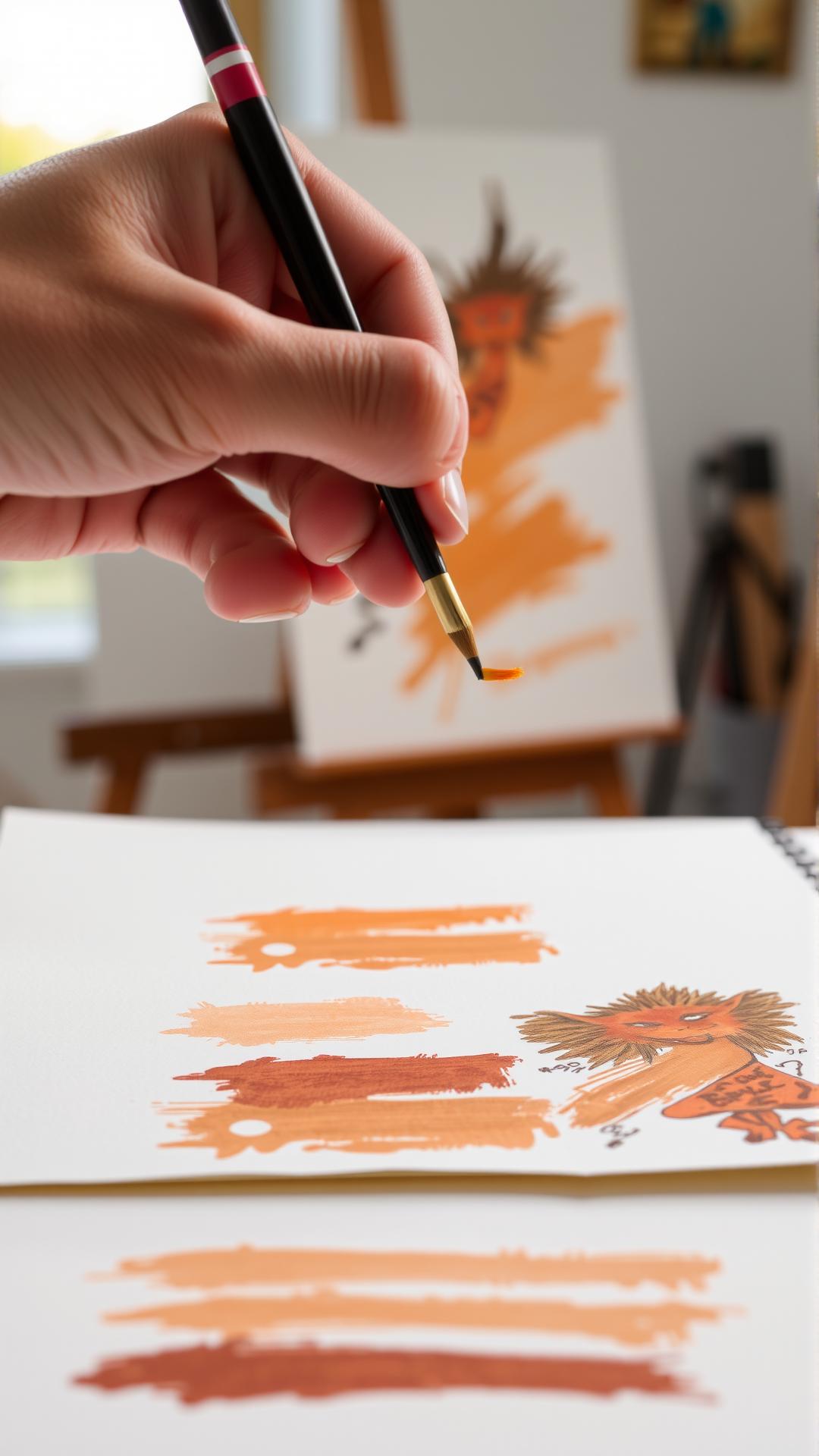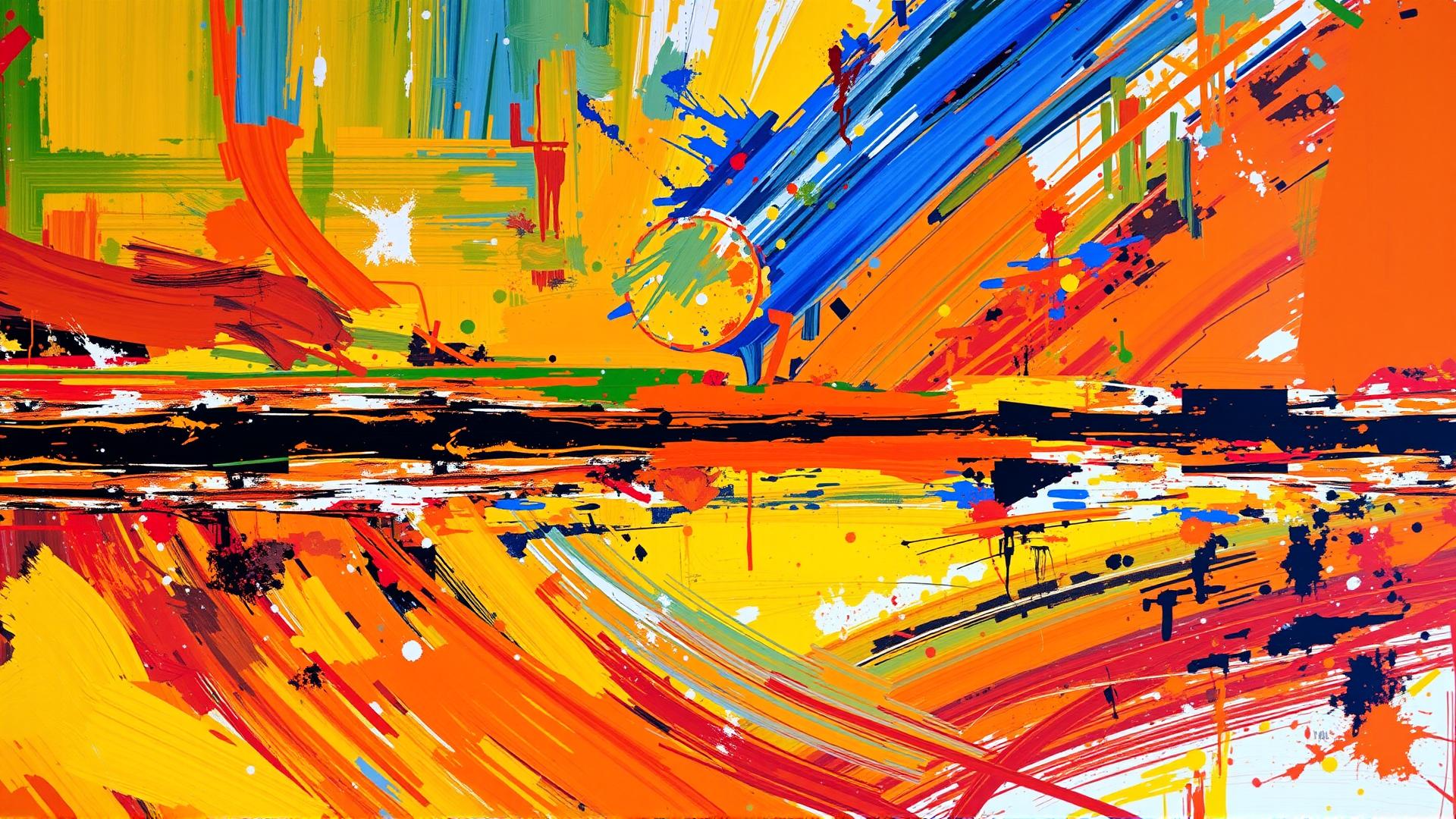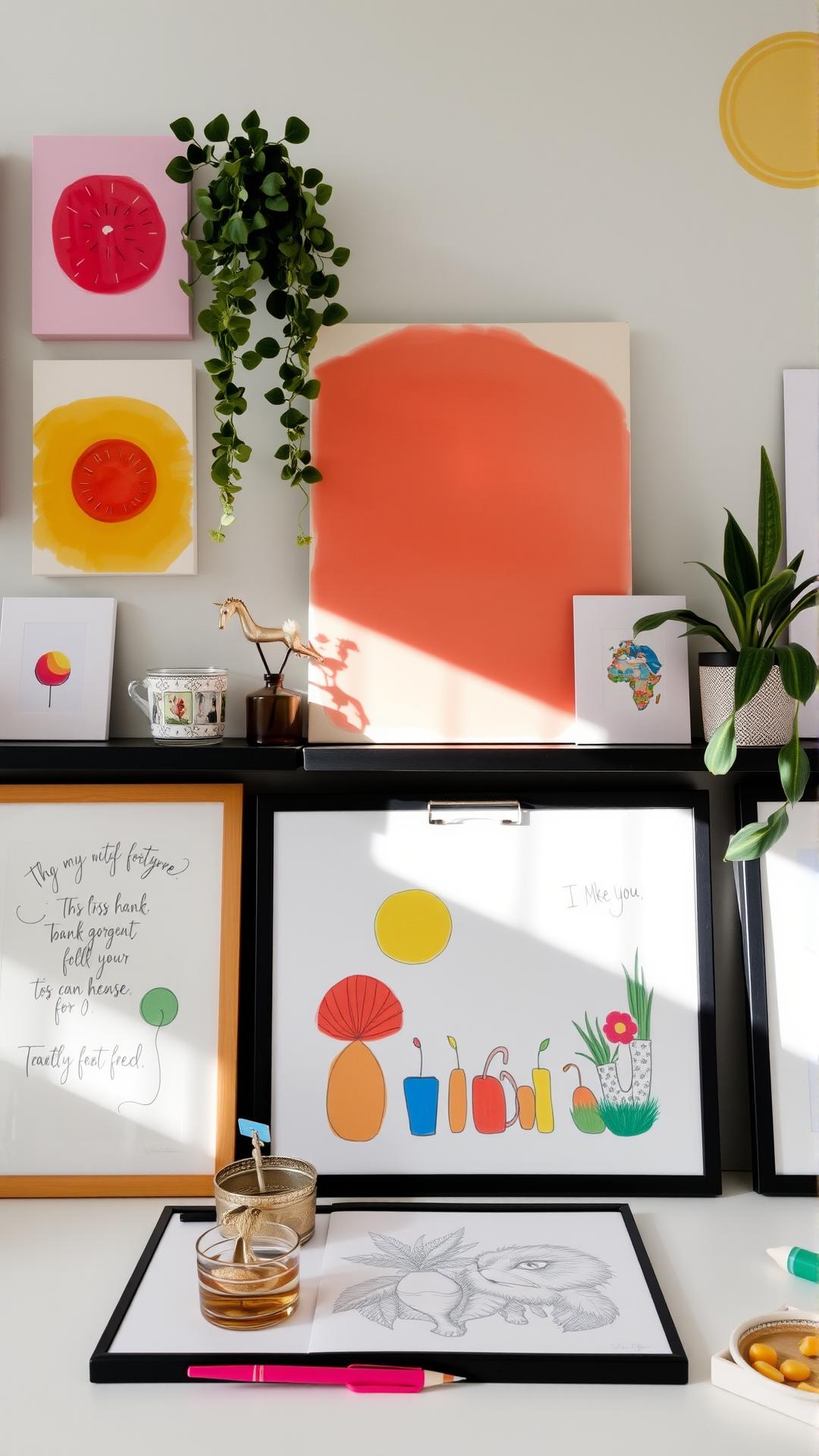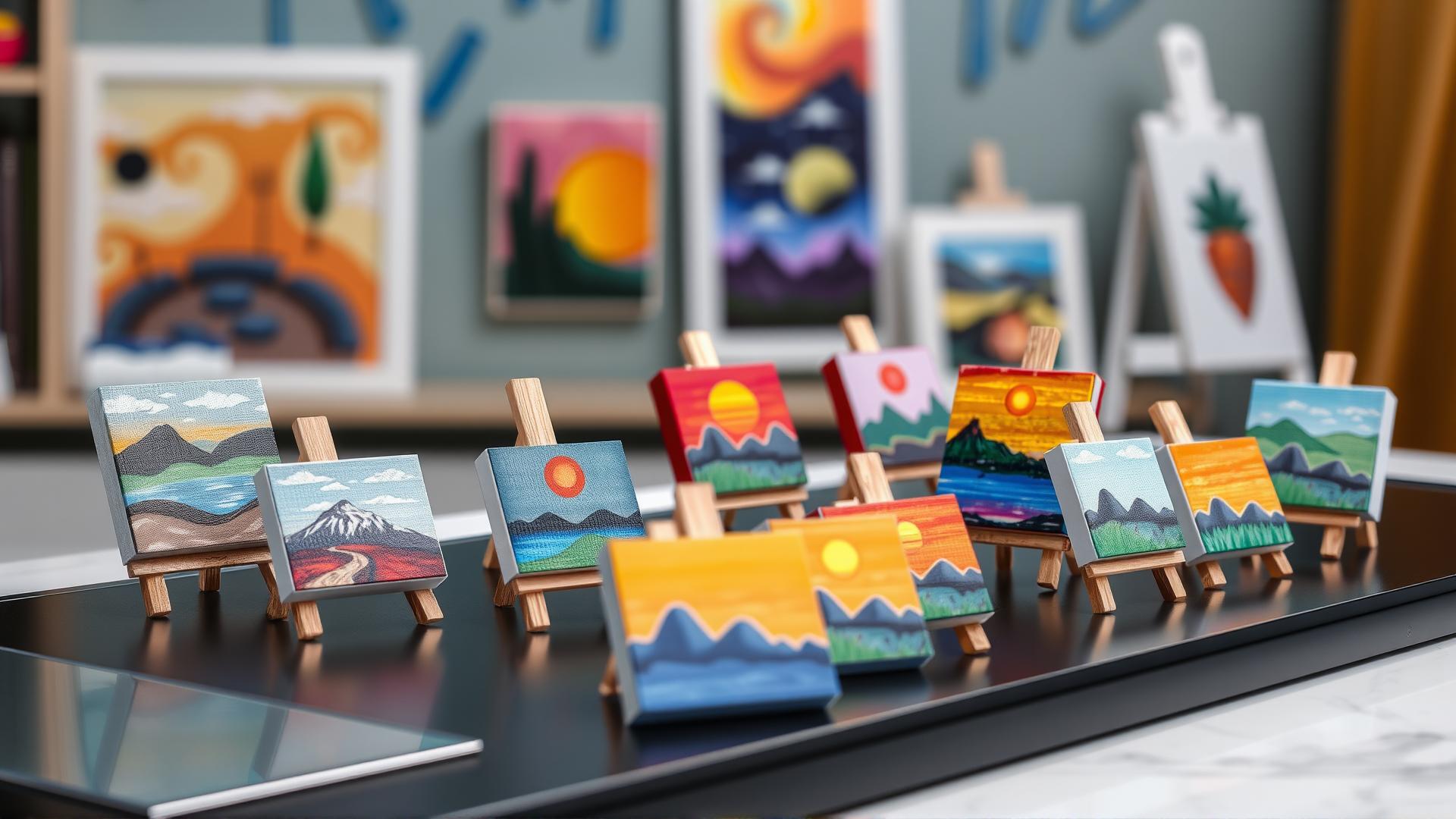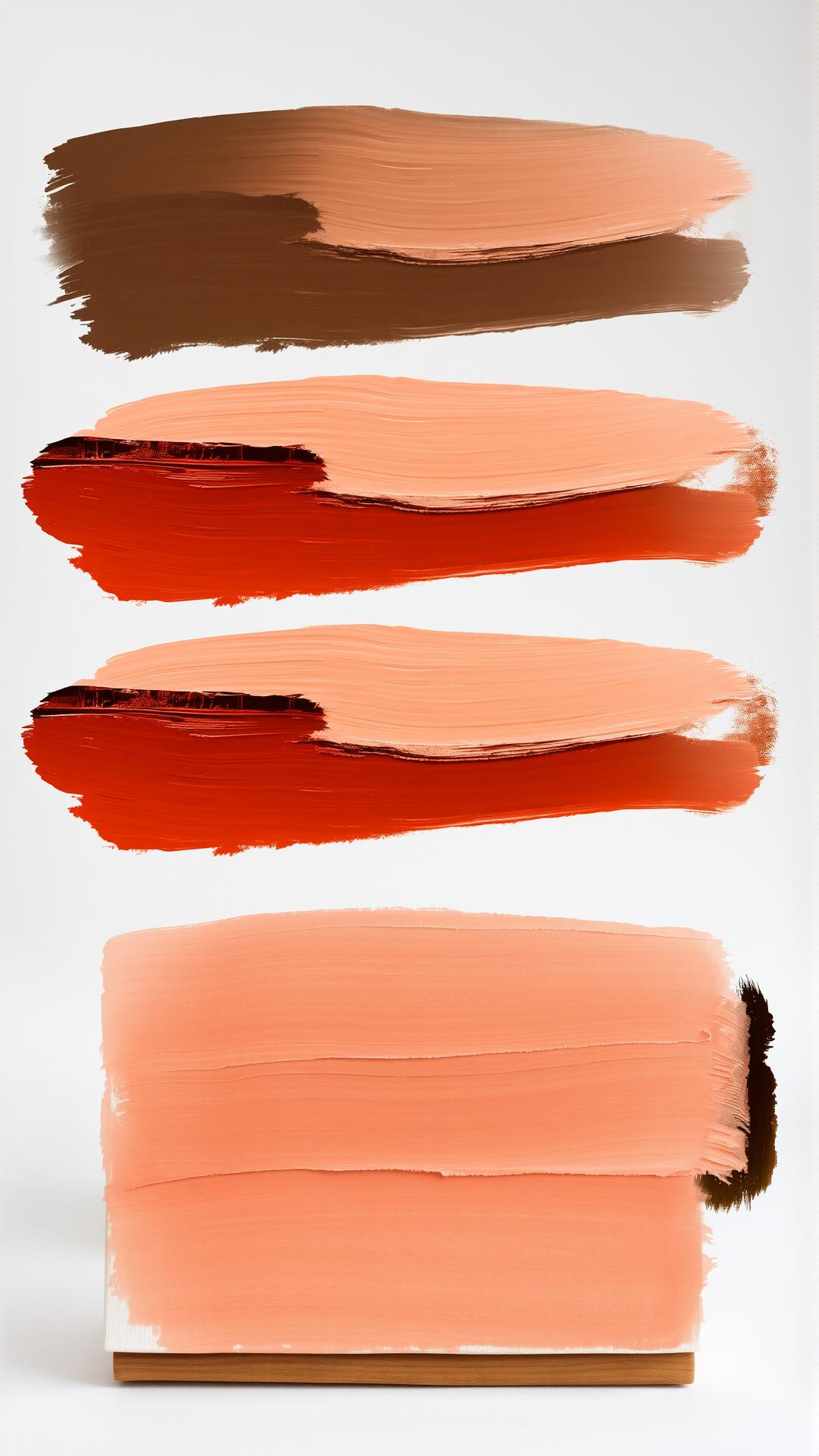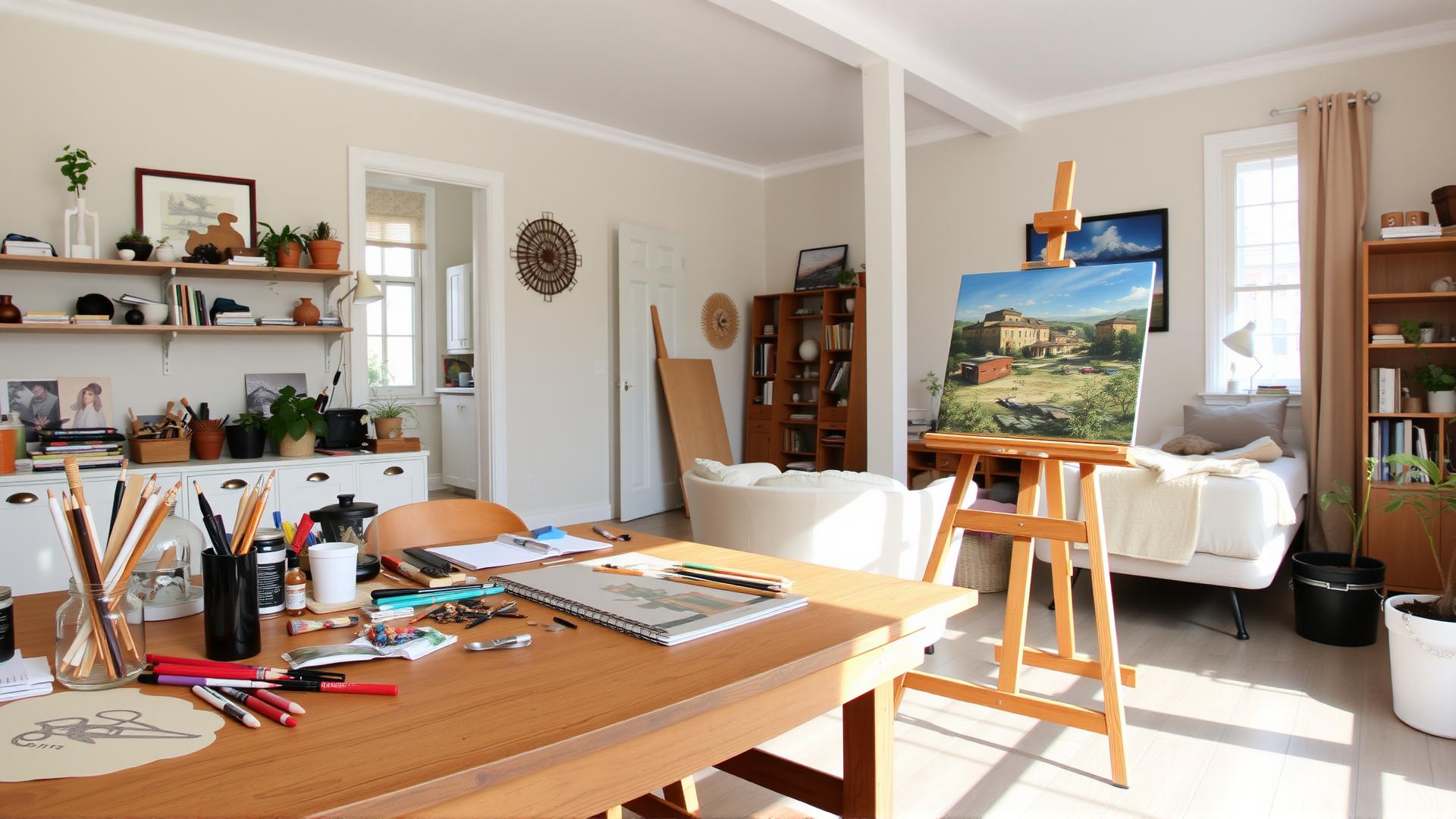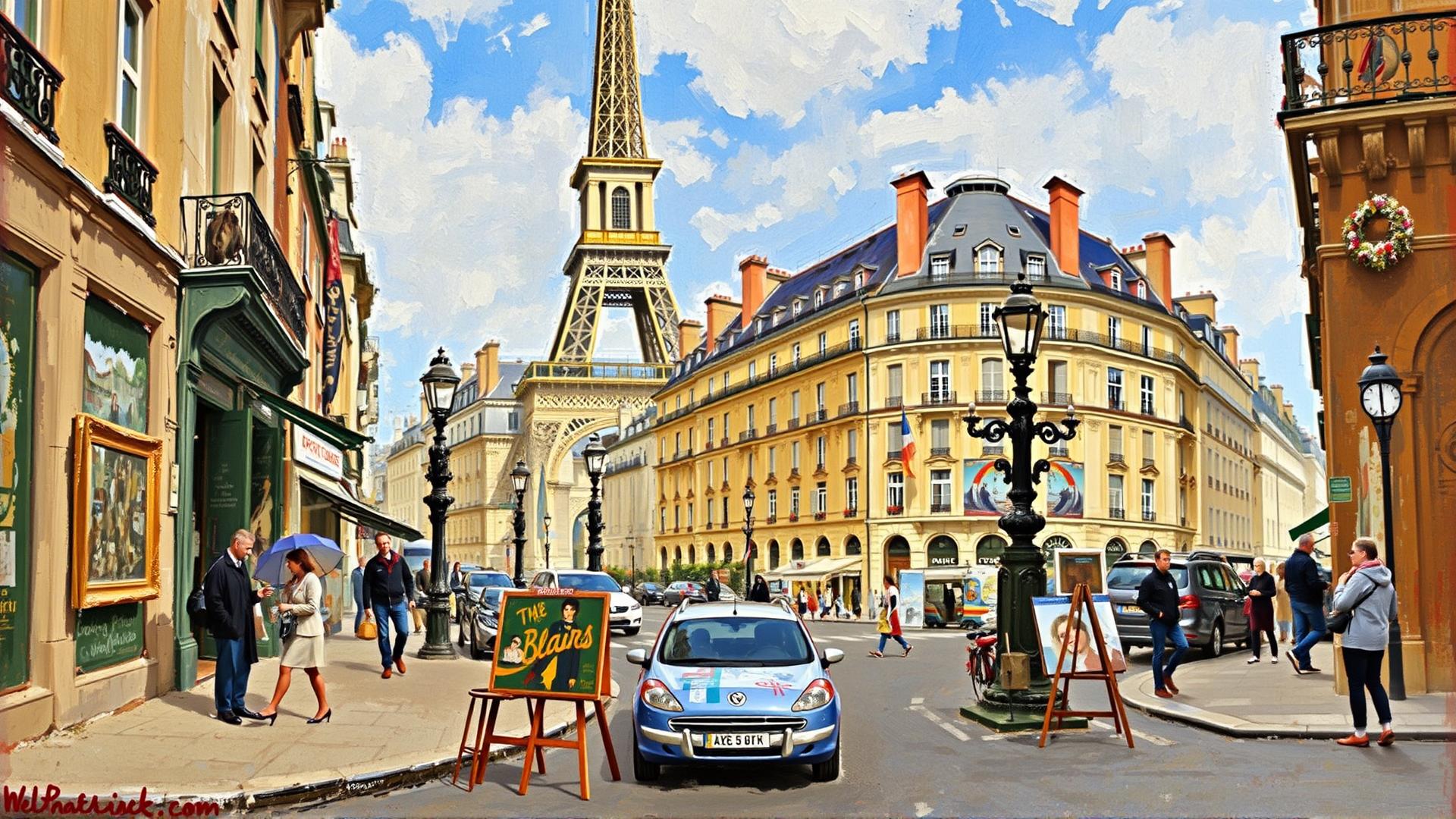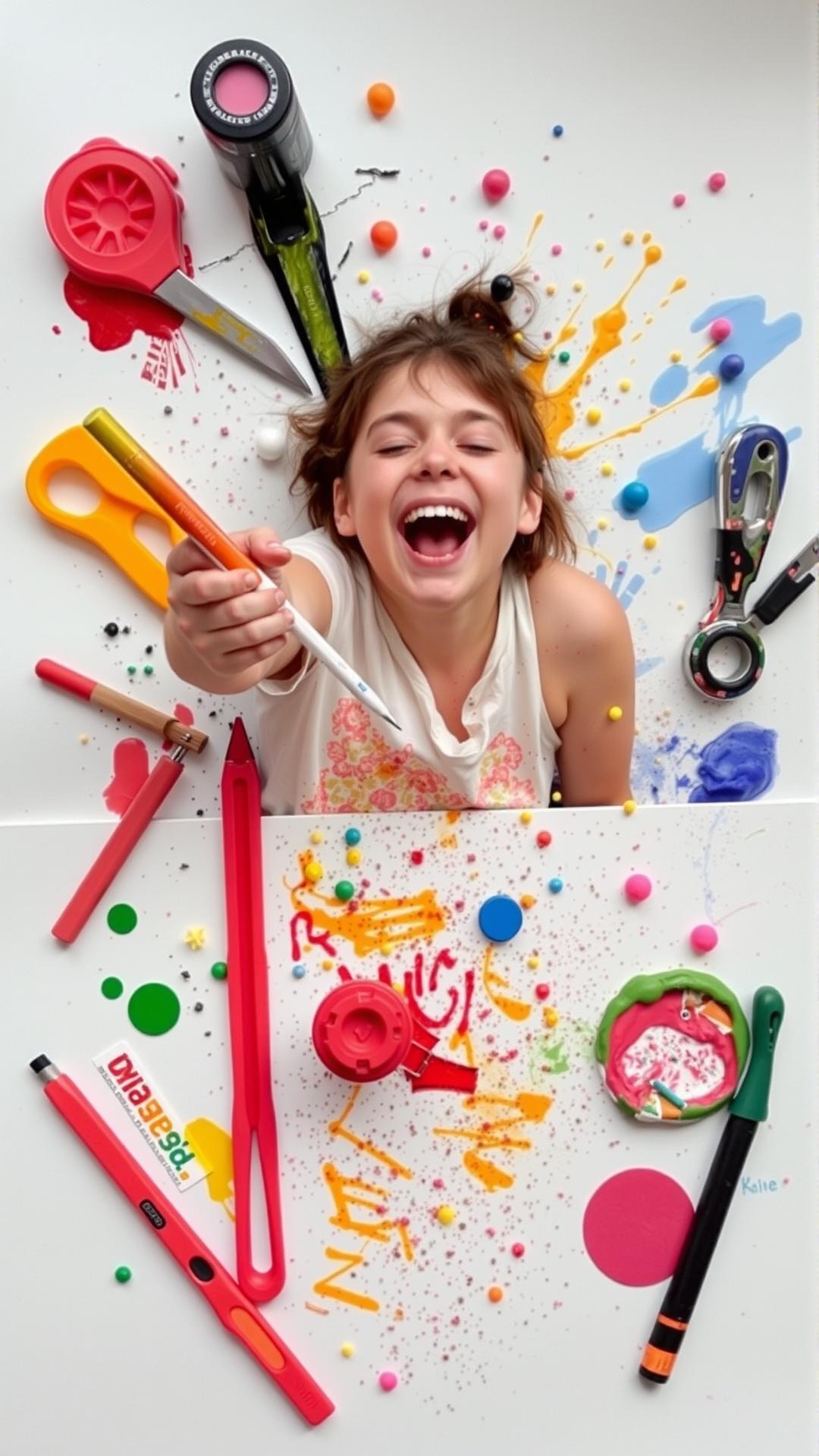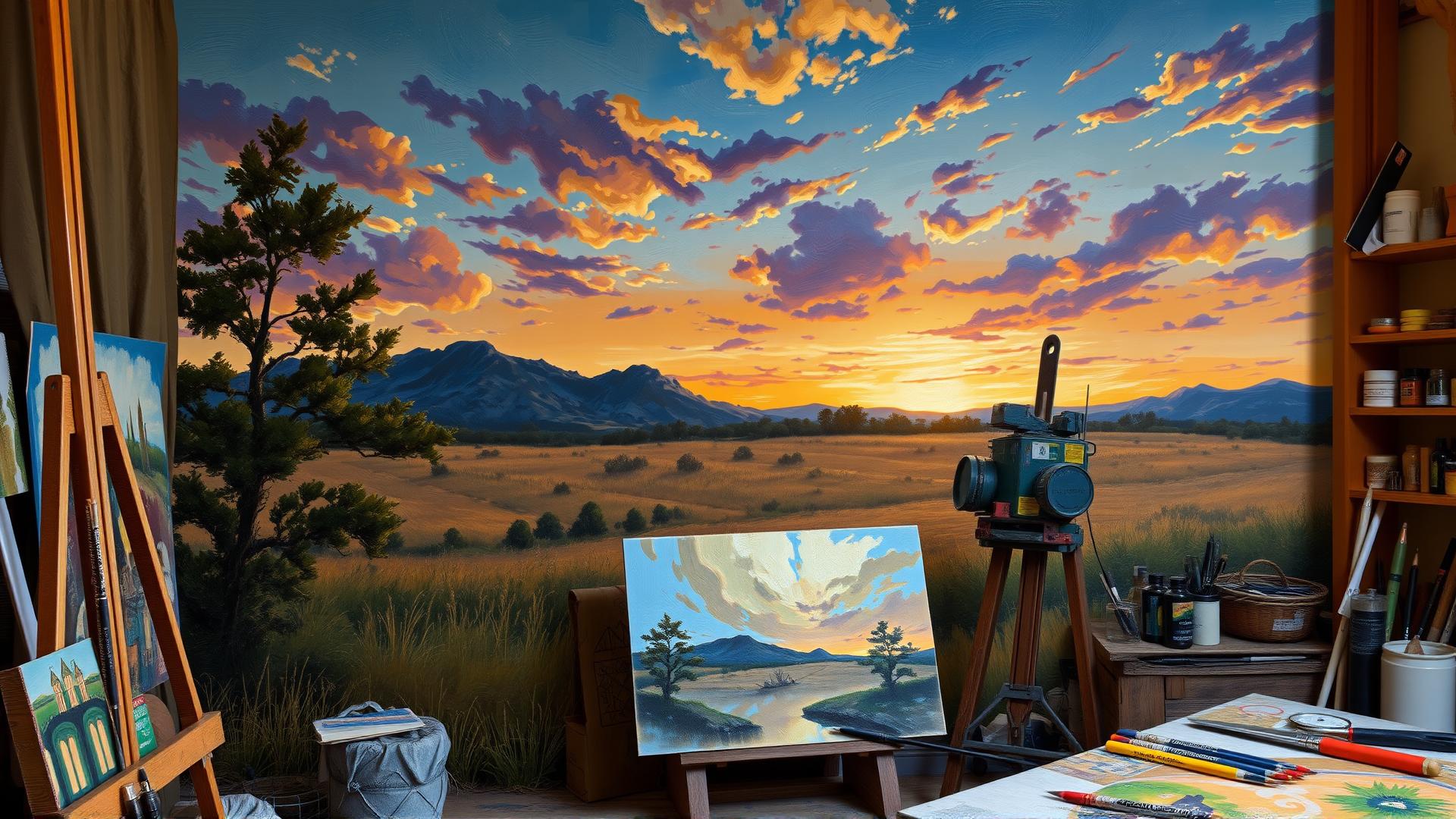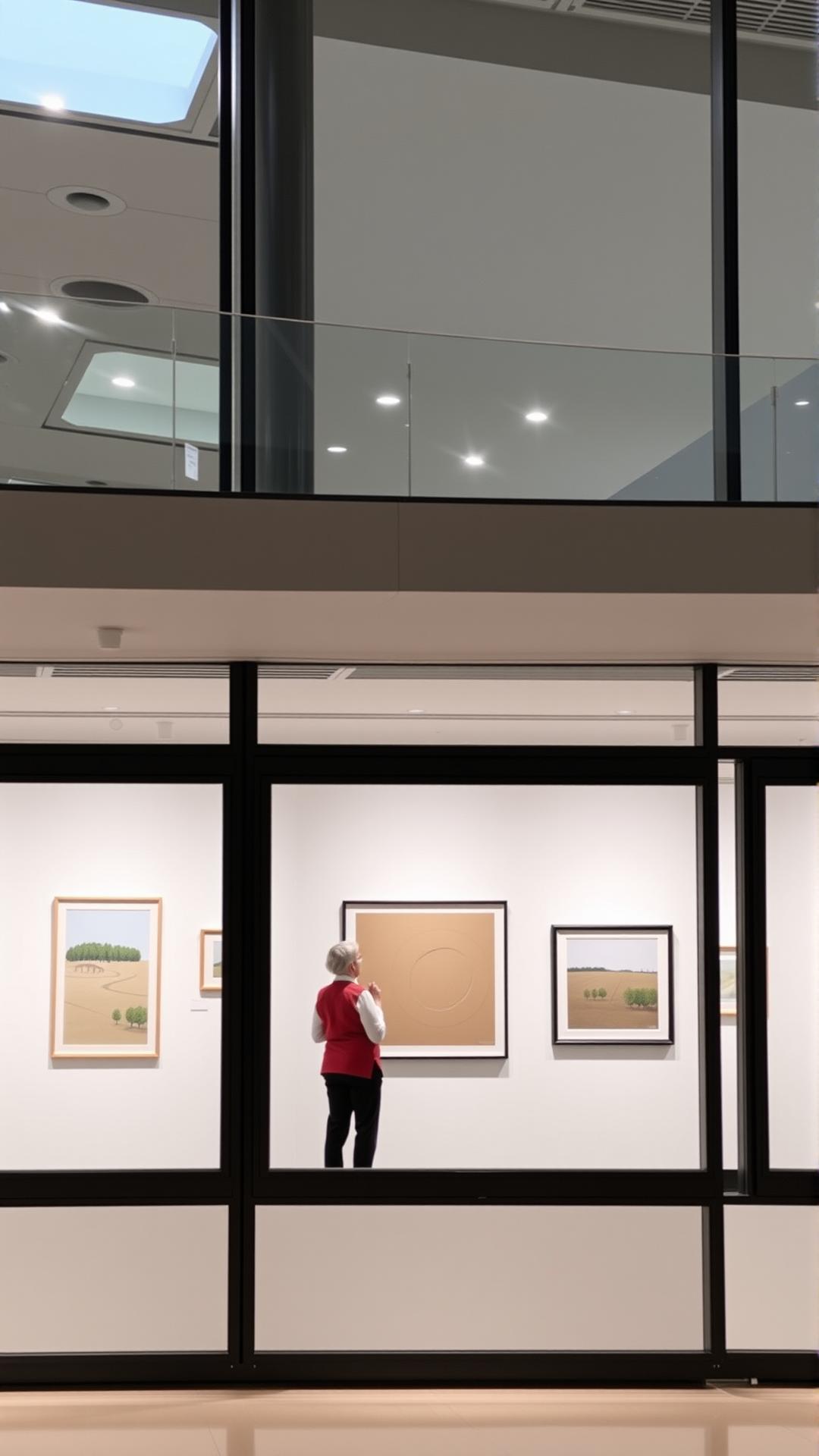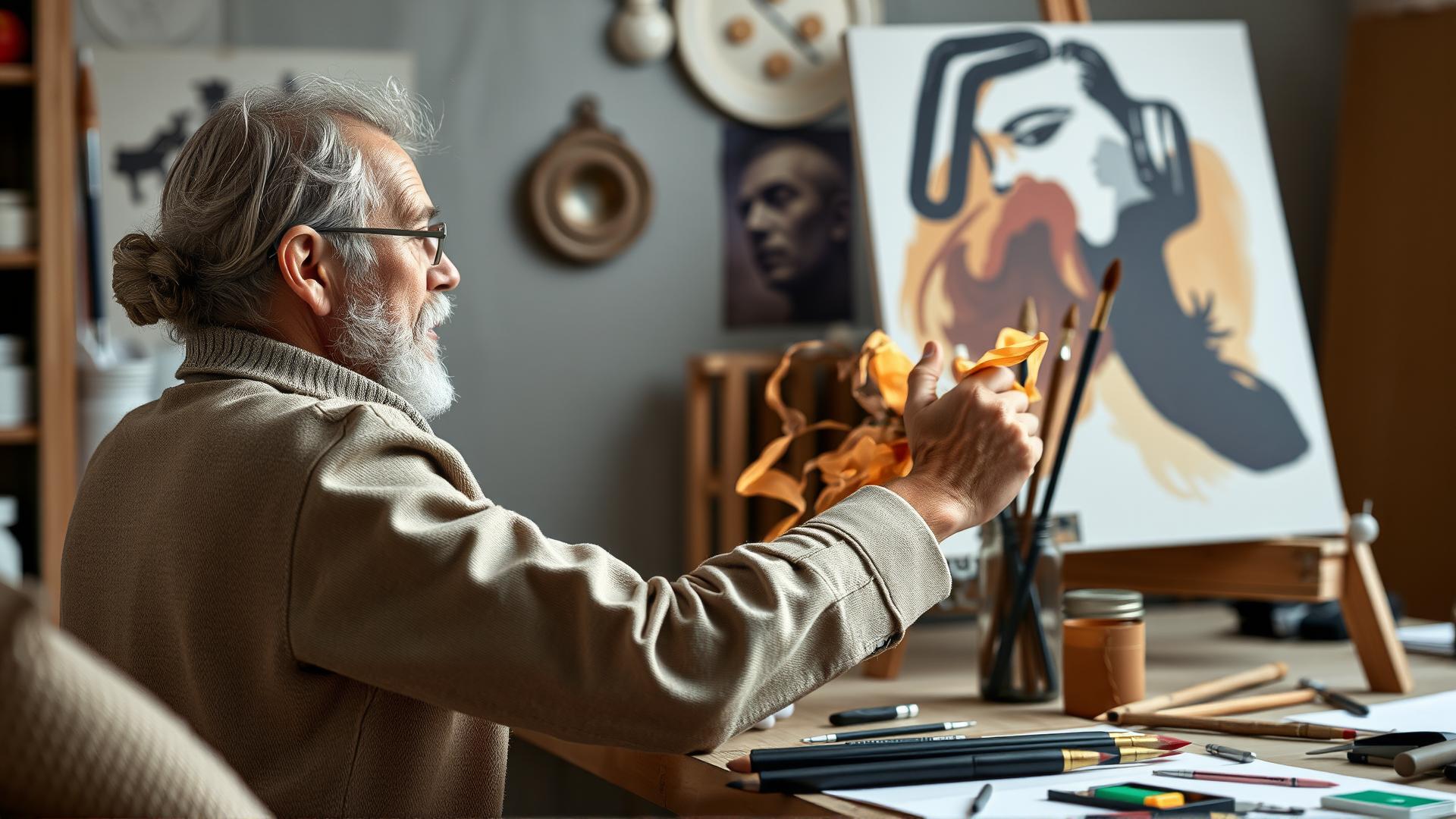
Effortless Creativity With Cool Simple Paintings Ideas
Introduction
Art has the incredible ability to transform simple moments into extraordinary experiences. When it comes to painting, the concept of ‘cool simple paintings’ invites both new and seasoned artists to explore their creative potential without the pressure of complexity. This article delves into the captivating world of effortless creativity through simple painting techniques, making art accessible to everyone. Whether you are a beginner seeking to dabble in acrylics or a seasoned artist looking for fresh inspiration, this comprehensive guide will provide you with valuable insights.
Throughout the following sections, we will explore various techniques and ideas that allow you to create stunning artworks with minimal effort. From understanding the unique properties of acrylic paints to employing straightforward methods that yield beautiful results, we aim to empower you to unlock your artistic voice. Join us as we embark on a colorful journey to discover how cool simple paintings can be a gateway to expressing your imagination and tapping into effortless creativity.
The Essence of Cool Simple Paintings
Understanding Cool Simple Paintings
Cool simple paintings embody the beauty of minimalism and spontaneity in artistic expression. These artworks often utilize straightforward shapes, limited color palettes, and uncomplicated techniques, making them highly accessible to artists of all skill levels. Unlike complex and intricate compositions, simple paintings focus on embracing creativity without the burden of perfectionism. They allow for personal expression through experimentation and playfulness, enabling the artist’s individual vision to take center stage.
The significance of cool simple paintings lies not only in their stunning aesthetic appeal but also in their capacity to resonate emotionally with viewers. These works can evoke feelings of nostalgia, joy, or serenity, depending on the colors and shapes employed. The simplicity of these paintings often allows viewers to project their own interpretations and emotions, creating a more personalized connection with the artwork. Additionally, they serve as a reminder that creativity does not need to be elaborate; sometimes, less is more.
Emotional and Therapeutic Benefits
Engaging in simple painting techniques can offer numerous emotional and therapeutic benefits. The act of painting itself can be meditative, providing a space for mindfulness and self-reflection. As individuals pick up their paintbrushes and let their thoughts flow onto the canvas, they often experience a release of stress and anxiety. This creative process encourages introspection and promotes mental well-being, making it a valuable tool for self-care.
The lack of complexity in simple painting methods enables artists to focus on the joy of creation rather than the final product. This shift in focus can lead to increased confidence and a sense of accomplishment, especially for those who may feel intimidated by more intricate forms of art. Simple paintings celebrate spontaneity and encourage a playful spirit, allowing individuals to explore their creativity without judgment.
Cool simple paintings are more than just artistic endeavors; they represent a philosophy of creativity that values emotional expression and personal connection over technical prowess. As artists engage in this form of painting, they uncover the transformative power of art—one stroke at a time.
Essential Tools for Simple Painting Basic Materials for Effortless Creativity
Choosing Your Painting Tools
Every artist’s journey begins with the right tools, which can significantly enhance your ability to create cool simple paintings. Whether you’re a beginner or have some experience, investing in a selection of basic materials can help streamline your creative process. For painting, the essential tools include brushes, paints, palettes, and surfaces.
When it comes to brushes, opt for a variety that includes flat, round, and filbert shapes. These different styles will allow you to apply paint in various ways, from bold strokes to soft blends. Look for brushes made from synthetic fibers, which are often more affordable and suitable for beginners. Pay attention to the sizes as well; having both small and large brushes will give you versatility as you explore your artistic expression.
Paint selection is equally important. Acrylic paints are a fantastic choice for simple paintings because they dry quickly and are easy to work with. They can be thinned with water or thickened with mediums, providing a range of texture and opacity. Watercolor paints are another excellent option for their fluidity and vibrancy, allowing you to create stunning effects with less effort.
Picking the Right Surfaces
The surface you paint on plays a critical role in the final outcome of your artwork. For acrylics, canvas boards or acrylic paper provide the best experience, as they are designed to hold the paint and facilitate blending. If you’re interested in watercolor, using watercolor paper is crucial, as it can absorb water without buckling. Consider thickness; heavier paper (around 300 gsm) is more durable and will prevent warping.
Choosing a surface also allows for unique expressions. Experimenting with different textures, such as canvas, wood, or even fabric, can yield exciting results. Remember that each medium requires a compatible surface, so always check recommendations for optimal results.
The right tools and materials will set a foundation for your artistic journey. As you gather these essentials, remember that the goal is to minimize the friction between your creativity and execution. With the basic tools in hand, you’ll find yourself ready to explore the world of cool simple paintings with ease and confidence.
Basic Techniques to Get Started Effortless Creativity in Painting
Brush Strokes and Their Impact on Simple Paintings
Brush strokes serve as the foundation for conveying texture and emotion in your artwork. Beginners should start by experimenting with a variety of strokes using different brushes. For instance, a flat brush is excellent for creating broad, sweeping lines, while a round brush can produce fine, detailed work. If aiming for a more spontaneous feel, try using a fan brush or even a sponge. The key is to practice; creating a stroke chart can allow you to visualize and improve your technique.
Consider varying the pressure applied to the brush. Light strokes can produce delicate details, while heavy strokes impart boldness to your work. Additionally, mastering techniques such as dry brushing—where a dry brush is used on dry paint—can add a unique texture to your paintings. This exploration of brush strokes opens the door to creating simple yet expressive artworks effortlessly.
Color Mixing: Building a Personal Palette
Understanding color mixing is vital for painting, particularly when aiming to create captivating artworks with limited colors. Start with a basic color wheel, and practice mixing primary colors—red, blue, and yellow—to achieve secondary colors (purple, green, and orange). This technique not only broadens your capabilities but also fosters creativity by allowing you to create various shades and tones suited to your requirements.
Using a limited palette can simplify the creative process, making it easier to maintain harmony in your painting. Experimenting with tints (adding white) and shades (adding black) can help you generate depth. The magic lies in creating a personal palette that resonates with your artistic voice, encouraging you to craft pieces that are uniquely your own.
Layering for Depth and Interest
Layering is a fundamental technique that adds richness to your paintings. This approach involves applying multiple layers of paint, allowing for blending and variations in texture. Beginners can start with a thin underlayer of paint, then gradually build up thicker layers as they gain confidence. Acrylics tend to dry quickly, allowing for swift layering, while watercolors provide a more delicate approach that emphasizes transparency.
Embrace the process of layering by allowing each layer to dry before applying the next. This practice not only helps prevent muddying your colors but also encourages you to play with changes in opacity and texture. Ultimately, layering transforms your simple paintings into engaging works of art that showcase your burgeoning skills and distinctive style.
Inspiring Ideas for Cool Simple Paintings
Creative Concepts for Effortless Artistic Expression
The beauty of simple paintings lies in their ability to convey profound emotions and ideas without the need for complex techniques. Simple artworks can range from abstract designs to nature-inspired pieces, allowing artists to express their unique vision with minimal effort. Here, we offer a variety of creative ideas that can spark your imagination and inspire you to pick up your brush with confidence.
One exciting idea is to experiment with abstract shapes. Using basic geometric forms such as circles, squares, and triangles, you can create dynamic compositions. Play with color combinations, using a limited palette to create a striking effect. By layering painterly strokes and allowing colors to blend, the result can capture movement and depth without overwhelming complexity.
Nature-inspired artwork offers another avenue for effortless creativity. Begin by choosing a simple subject like a single flower or a tree silhouette. Using broad, flat brush strokes, depict the essence of your subject. You might use a wet-on-wet technique to allow colors to mingle on the canvas, creating organic transitions. This approach can produce beautifully blended backgrounds that evoke the tranquility of a natural setting.
For those looking to incorporate patterns, consider creating a series of simple dots or lines. You can fill a canvas with repetitive motifs made from your favorite colors. This method emphasizes rhythm and can transform a plain space into a vibrant piece of décor. The repetition invites viewers to explore the artwork closely, discovering the beauty in simplicity.
Another idea is to combine text with visual elements. Using a favorite quote or a few inspiring words, you can paint them onto your canvas with a brush or even use stencils for precision. Surround the text with abstract colors or soft watercolor washes that create a soothing background. This blending of typography and imagery allows for a personal touch while remaining uncomplicated.
Consider creating minimalist landscapes. A simple horizon line with a colorful sky can suggest a sense of openness and calm. By focusing on a limited color scheme and basic shapes, you can evoke feelings of peace and serenity. Such paintings can serve as a reminder of the quiet beauty present in nature.
Techniques for Achieving Depth in Simple Paintings Enhance Your Artistic Vision Through Shading and Layering
Creating depth in simple paintings is a captivating way to enrich your artistic expressions without overwhelming complexity. By employing techniques like shading and layering, you can transform a flat canvas into a multi-dimensional experience, effectively elevating your work to new heights.
Understanding Shading Techniques
Shading is an essential technique for bringing volume and life to your paintings. A basic understanding of light sources sets the foundation for effective shading. Determine where the light is coming from and how it interacts with your subjects. For instance, when painting a simple landscape, consider how sunlight casts shadows and highlights. Utilize a range of values—from light to dark—to create contrast and suggest form.
Experimenting with different tools can also yield interesting results. You might find that using a sponge or brush creates softer transitions, while a palette knife achieves sharper edges. Value scales can guide your shading practice, helping you to visualize and implement gradients that establish a sense of depth.
Layering for Dimension
Layering is another vital technique that can enrich your artwork. By applying multiple layers of paint, you can build complexity gradually. Start with a simple base layer as your foundation, then add additional layers using various colors and textures. This not only creates a feeling of depth but also encourages a more dynamic interaction between the elements of your painting. For example, in a floral painting, layering different shades of green for leaves and vibrant hues for the petals can produce a captivating focal point.
Consider using glazing techniques, where transparent layers of color are applied over dried paint. This approach allows for the underlying marks to inform the visual outcome, adding a luminous quality to your artwork. You can also play with opacity; alternating between opaque and transparent layers can produce fascinating contrasts that invite viewers to look deeper.
Incorporating these techniques into your creative process will help you convey depth in your simple paintings. By skillfully balancing shading and layering, you can effectively express your artistic vision, turning ordinary subjects into extraordinary pieces of art. This focus on depth not only elevates your work but also invites emotional engagement, allowing your audience to appreciate the thoughtful nuances inherent in simplicity.
The Joy of Experimentation in Cool Simple Paintings
Discovering New Styles and Techniques
Creating art is not just about following techniques; it’s about pushing boundaries and finding your unique voice. The act of experimenting with different styles and methods in cool simple paintings opens up a world of possibilities. By stepping outside your comfort zone, you can uncover new ways to express your artistic vision. Each brush stroke becomes an opportunity to learn and evolve, making your creative journey both dynamic and fulfilling.
When you allow yourself to try various techniques, such as watercolor washes, impasto effects, or even mixed media, you can blend simplicity with complexity in unexpected ways. For example, using bold colors in combination with light, airy strokes can produce stunning contrasts that evoke strong emotions. This exploration not only enriches your repertoire but also strengthens your problem-solving skills as an artist.
Embracing Mistakes as Learning Opportunities
One of the most vital aspects of artistry is the acceptance of mistakes. While aiming for perfection may seem ideal, embracing imperfections can lead to remarkable outcomes. When experimenting, you may stumble upon a pleasing mistake that sparks inspiration for future works. Instead of fearing the unexpected, approach it with curiosity, and consider how you can adapt it into your painting. This shift in mindset allows for a more fluid and enjoyable creative process.
Set aside a canvas or a piece of paper solely for experimentation. Try out new brush techniques, play with contrasting colors, or even employ unconventional tools, such as sponges or palette knives. Engaging with various mediums allows you to discover textures and shapes that resonate with your artistic identity. The joy of these experiments lies not in the final product but in the process of exploration that brings each piece to life.
The joy of experimentation lies in its ability to break routine and ignite a passion for creativity. As you continue to explore various styles and paint freely, you’ll find that your artistry flourishes. Allow yourself to relish the journey, knowing that every attempted technique—regardless of the outcome—contributes to your growth as an artist.
Sharing Your Artwork with the World Connect Through Simple Paintings
Showcasing Your Artistic Talent Online
In a world that thrives on visual communication, sharing your simple paintings is an exciting opportunity to connect with people and showcase your artistic talent. Social media platforms are ideal for aspiring artists looking to present their work. To start, create dedicated profiles on platforms like Instagram, Pinterest, or Facebook that allow you to highlight your art. Consider using hashtags that resonate with your work, such as #SimplePaintings or #EffortlessArt, to reach a broader audience.
When preparing your posts, ensure that you capture high-quality photographs of your artwork. Natural light often brings out the details and colors of your paintings best. Experiment with different angles and backgrounds to find what complements your work. Engaging captions that express your creative process or the inspiration behind each piece can also make your posts more relatable and interesting to your audience.
Engaging with the Community and Local Events
Online presence is important, but don’t overlook the power of local connections. Participating in community art events is a wonderful way to share your work in person. Look for local galleries, art fairs, or community centers that frequently host exhibitions. Often, these venues welcome newcomers and offer an opportunity to display your simple paintings, helping to foster connections with other artists and art enthusiasts.
Consider organizing or joining local painting classes or workshops. Not only does this allow you to showcase your artwork, but it also aids in making connections within the art community. Collaborations with other artists or participating in group shows can amplify your exposure and allow you to benefit from collective marketing efforts.
Remember that feedback is a valuable asset. Engage your audience both online and in-person by asking for their thoughts on your work. Constructive criticism can help refine your artistic vision, while positive encouragement boosts your confidence and motivates you to create even more.
Sharing your artwork, whether through social media or local events, can open doors to numerous possibilities. Allow your personality to shine through your paintings and connect with others who appreciate your unique style. Sharing the journey of creating art is just as significant as the finished piece itself.
Conclusions
Cool simple paintings are not just an artistic endeavor but also a pathway to personal expression and creativity. By embracing straightforward techniques that emphasize exploration and enjoyment, artists can connect deeply with their work. The insights shared in this article provide a foundation for experimenting with various painting methods, enabling you to find your unique style. Regardless of your skill level, this artistic journey can be fulfilling and liberating.
Simple paintings invite a sense of joy and playfulness that enriches the creative process. As you incorporate these ideas into your artistic practice, remember that the beauty of creativity lies not in complexity but in the authenticity of your expression. Happy painting, and may your brush continue to explore the vibrant world around you!


